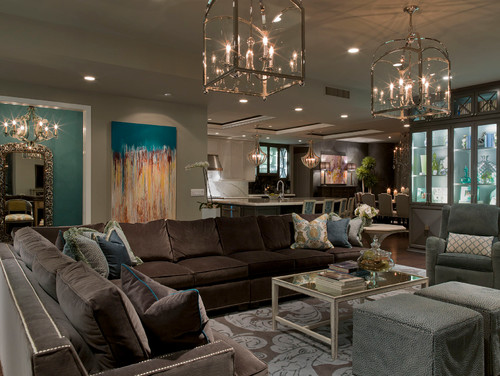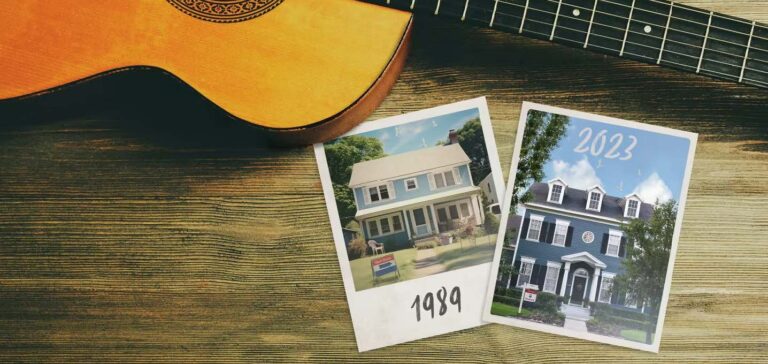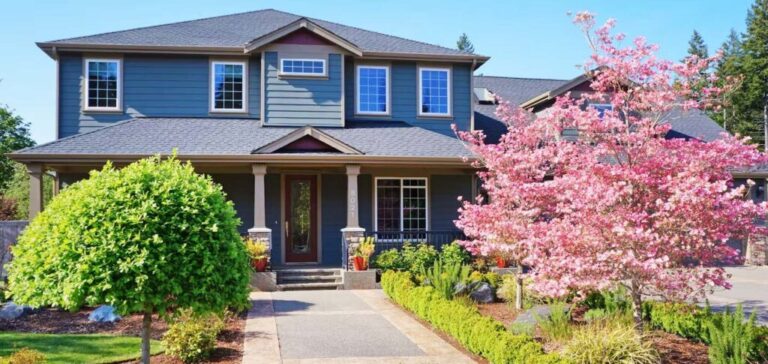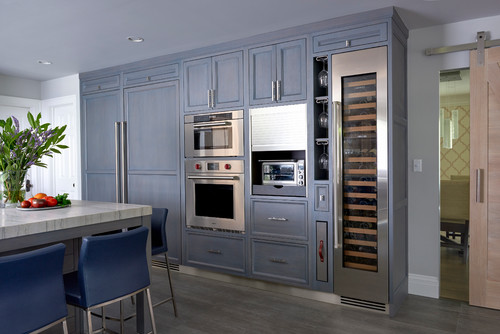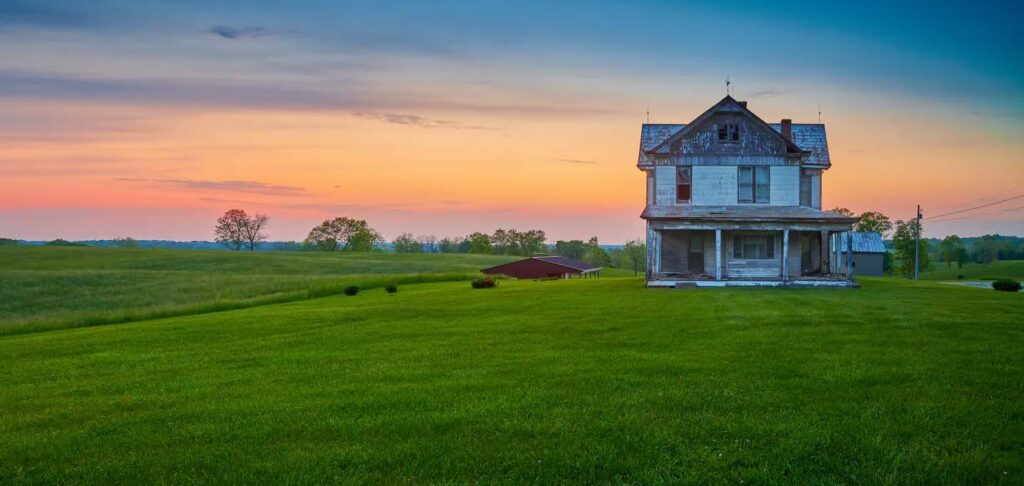
Ideal location, renovated appliances, and maybe haunted. Some houses contain these quirky features sure to raise eyebrows.
Creaking floorboards, crackling fireplaces and unique windows are just a few features to love in older homes. And in some locales – especially across New England states – these historical features reveal eerie stories of life many centuries ago.
In celebration of Halloween, learn the myths – and modern interpretations – behind some classic and some rare details found in older homes.
‘Witch windows’
Across parts of New England and especially in Vermont, it’s not uncommon to stumble upon houses that feature witch windows – also known as Vermont windows. Situated at a 45-degree angle, these wonky, diagonal windows are typically sandwiched under eaves in spaces too narrow to fit a vertical window. It’s most common to see a historic witch window on a 19th century farmhouse.
This unusual household detail comes with an equally unusual past. The name “witch window” arises from speculation that witches – when traveling by broomstick – were unable to fly through a tilted window frame.
Rich Gardner, REALTOR® and Co-Owner of RE/MAX North Professionals in Colchester, Vermont, is no stranger to the witch window and its famous folklore as he’s sold many homes that boast them. Thought to keep witches at bay, he believes they actually originate with a more practical purpose.
“Witch windows were born out of creativity and the willingness to not throw things away,” Gardner explains. “Farmers were likely looking to bring some light or some fresh air into what typically would be rooms that wouldn’t have windows.”
He adds that they are often placed to bridge the space between the original house structure and an addition. And in the 1800s, there were far fewer options for window shapes – so repurposing an existing window frame was a sensible solution.
Whether their history is one of practicality or witchcraft, Gardner says they are yet another feature that make older homes in the countryside special and help tell a house’s origin story.
Plus, he quips, why wouldn’t a flying witch try out any of the other non-tilted windows?
Fireplaces big enough to fit a cauldron
For Blaze Johnson, an agent with RE/MAX 360 in Massachusetts, coming across a potentially haunted house is just another day’s work.
She has frequently seen signs of witchcraft inside many of the homes she lists in and around Salem over the past 30 years. Located on Boston’s North Shore, Salem is home to the infamous 17th century witch trials.
In Johnson’s seaside locale, a home built in the early 20th century is considered “new.” Many homes in the area date back to before 1700 – and still have the details to prove it. Despite their need for livable upgrades like rewired electricity, the area’s homes are beloved by antique lovers for their wooden beams, fieldstone exteriors, wide-pine floors and vast wood-burning fireplaces, she notes.
“My own house was built in 1680 and has a fireplace big enough for a person to walk right into,” Johnson says.
Before she arrived, Johnson’s home in nearby Ipswich served as stagecoach station and then a tavern over multiple centuries, surely once a meeting spot for drinks and sorcery.
With so much history packed into one place, the local Historical Society is vigilant in preserving houses and landmarks that capture the area’s speculated supernatural origins.
Being a real estate agent in Johnson’s market comes with some unique challenges – one of which being that she deals with properties commonly rumored to be haunted.
“I have clients that ask me point blank, ‘Is this house haunted?’ I tell them they can typically just do a ritual to get rid of any bad spirits,” she says, adding that she’s even heard of some calling in professionals for a séance prior to moving day – just for good measure.
Alternating stairs
Alternating tread staircases – that is, a set of stairs where each step is divided in half and staggered – have become a popular share across social media as they’re occasionally discovered in older homes.
Like the witch windows, some believe these wonky staircases were designed to pose challenges for witches. With their alternating structure (difficult for anyone to navigate), it was thought that witches would be unable to ascend, and therefore the home was safe from their intrusion.
In reality, this formation, too, was born out of practicality, likely to fit a staircase into narrow spots in smaller houses or cramped basement quarters.
Ever wondered about the history of your own home? Take clues from era-specific construction to get a better understanding for the purpose of certain features. You never know the stories it holds – or if the space itself is haunted!
Article originally appeared on RE/MAX.com.

